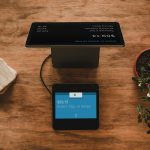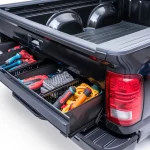Buying a car is a significant investment and an exciting milestone. For many, the car lot is the gateway to this new chapter, whether you’re purchasing your first vehicle or upgrading your current ride. However, walking onto a car lot can be overwhelming with rows of shiny vehicles and an array of options. To help you make the most of your car-buying experience, here’s a detailed guide to navigating the car lot.
Understanding the Car Lot Environment
Car lots are designed to showcase vehicles in the best possible light. They are often laid out to highlight different types of vehicles—new, used, certified pre-owned (CPO), and sometimes even luxury or specialty cars. Here are the main categories you might encounter:
- New Cars: These vehicles have never been owned and come with the full manufacturer’s warranty. They are the latest models with the most up-to-date features and technology. the Car Lot
- Used Cars: These vehicles have had previous owners. They are typically less expensive than new cars but may come with higher mileage and potential wear and tear. the Car Lot
- Certified Pre-Owned (CPO) Cars: CPO vehicles are used cars that have been inspected and refurbished by the manufacturer or dealer. They come with a limited warranty and are generally in better condition than standard used cars.
- Luxury and Specialty Vehicles: These are often high-end or niche vehicles that may come with unique features or higher price tags.
Preparing for Your Visit
Before you step onto the car lot, preparation is key. Here are some steps to ensure you’re ready:
- Research Your Options: Determine what type of vehicle you need based on your lifestyle and budget. Consider factors like fuel efficiency, safety features, and the size of the vehicle.
- Set a Budget: Establish how much you can afford to spend, including any down payment and monthly payments if you’re financing the car. Don’t forget to factor in additional costs such as insurance, taxes, and registration.
- Check Your Credit Score: Your credit score will impact the financing options available to you. Knowing your score beforehand can help you negotiate better terms.
- Make a List of Must-Have Features: Identify the features that are important to you, such as advanced safety systems, navigation, or leather seats. the Car Lot
Visiting the Car Lot
Once you arrive at the car lot, here’s how to make the most of your visit:
- Take a Walk: Start by walking around the lot to get a sense of the inventory. Look for signs indicating the types of vehicles available and locate the section with the vehicles you’re interested in.
- Engage with Sales Representatives: Salespeople are there to assist you, but it’s important to be clear about your needs and budget from the outset. Ask questions about the vehicles you’re interested in, and don’t hesitate to request test drives. the Car Lot
- Inspect the Vehicles: When you find a car you like, thoroughly inspect it. Check the exterior for any scratches or dents, and look at the tires to ensure they are in good condition. For used cars, ask for the vehicle history report to understand its past.
- Test Drive: A test drive is crucial to assess the car’s performance and comfort. Pay attention to how it handles, accelerates, and brakes. Listen for any unusual noises and test out all the features to ensure they work correctly.
Negotiating the Price
Negotiating is a critical part of the car-buying process. Here are some tips to help you get the best deal:
- Know the Market Value: Research the market value of the car you’re interested in using online tools such as Kelley Blue Book or Edmunds. This will give you a baseline for negotiations.
- Be Prepared to Walk Away: If the terms are not favorable, don’t be afraid to walk away. There are plenty of other dealerships and cars available.
- Negotiate the Total Price: Focus on negotiating the total price of the vehicle rather than just the monthly payments. Dealers might offer lower monthly payments but extend the loan term, which could end up costing you more in the long run.
- Consider Additional Costs: Be aware of additional costs such as dealer fees, taxes, and optional add-ons. Make sure you understand the full cost before finalizing the deal.
Finalizing the Purchase
Once you’ve agreed on a price, there are several final steps to complete the purchase:
- Review the Contract: Carefully review the sales contract to ensure all the terms are correct and that there are no hidden fees. Confirm the agreed-upon price and check that any verbal promises are included in writing.
- Arrange Financing: If you’re financing the car, review the loan terms carefully. Ensure you understand the interest rate, loan term, and monthly payments. You can choose to finance through the dealership or through a bank or credit union.
- Complete the Paperwork: The paperwork will include the bill of sale, financing agreements, and possibly a warranty or service contract. Make sure all documents are correctly filled out and that you receive copies of everything for your records.
- Get Insurance: Before you drive off the lot, you’ll need to have insurance in place. Contact your insurance provider to arrange coverage for your new vehicle.
After the Purchase
Once you’ve driven off the lot, your responsibilities don’t end there. Here are a few final steps to consider:
- Follow Up on Maintenance: Keep track of the vehicle’s maintenance schedule. Regular upkeep will ensure your car remains in good condition and can help prevent costly repairs.
- Read the Owner’s Manual: Familiarize yourself with the car’s features and maintenance requirements by reading the owner’s manual. This will help you make the most of your vehicle.
- Provide Feedback: If you had a positive experience, consider leaving a review for the dealership. If there were issues, provide constructive feedback to help improve their services.
Conclusion
Navigating the car lot can be an enjoyable and rewarding experience with the right preparation and approach. By understanding the different types of vehicles, preparing thoroughly, engaging with sales representatives effectively, and negotiating wisely, you can find the perfect car that meets your needs and fits your budget. Remember, buying a car is not just a transaction; it’s a step towards a new experience. Enjoy the process, and drive safely.











